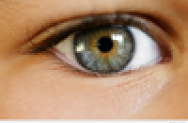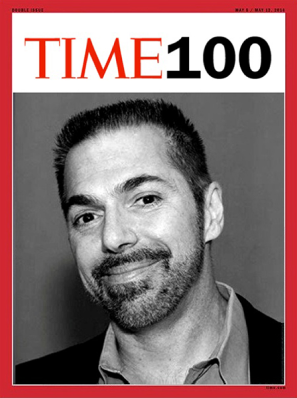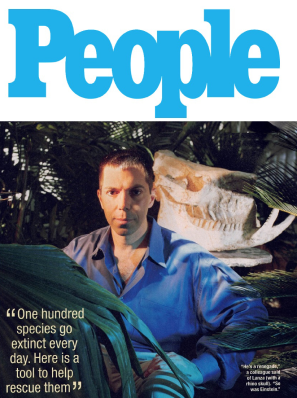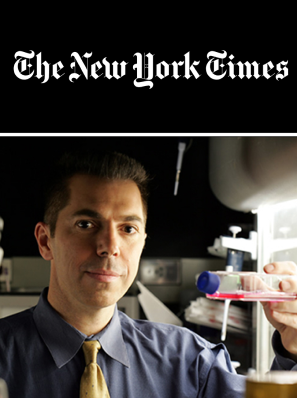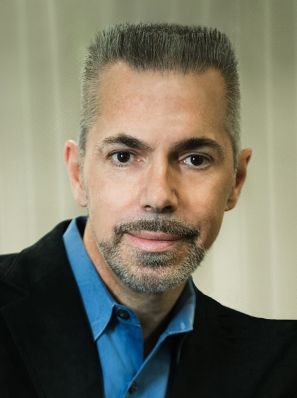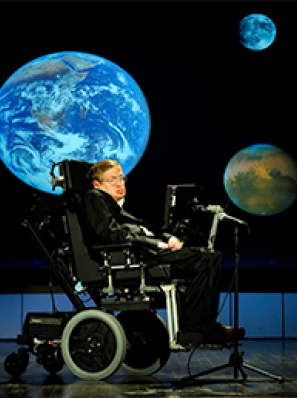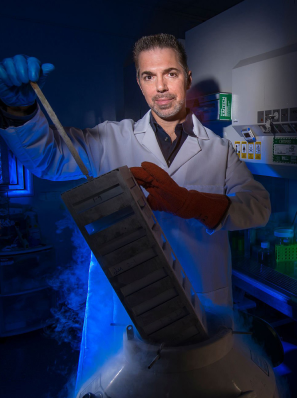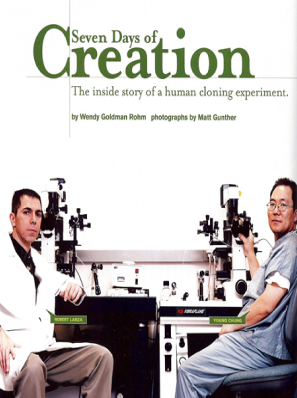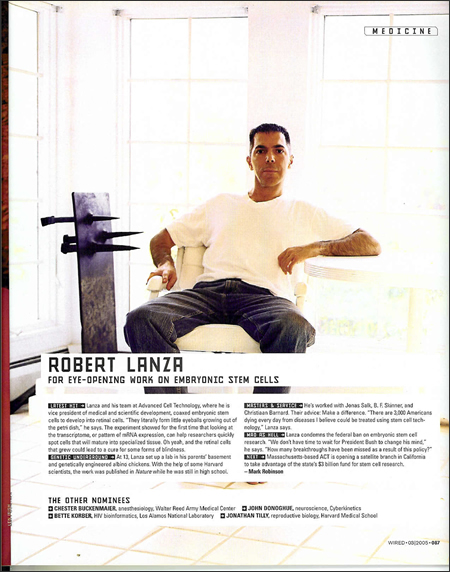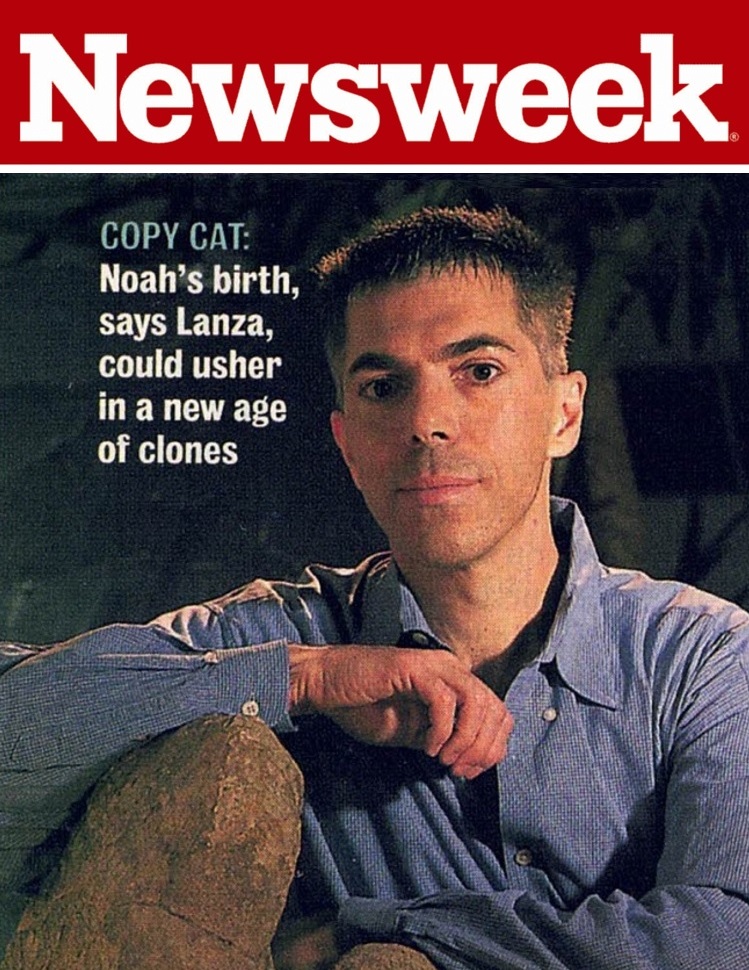The first patients to receive human embryonic stem cell transplants say their lives have been transformed by the experimental procedure
By Alice Park | @aliceparkny | January 24, 2012 |
For the researchers at UCLA’s Jules Stein Eye Institute who launched the first-ever study to show that human embryonic stem cells may help reverse patients’ disease, the history-making day began at 4:30 a.m. It was an early morning wake-up call, to be sure, but a necessary one to prepare for the groundbreaking work that lay ahead. On July 12, 2011, the scientists injected retinal cells derived from embryonic stem cells into the eyes of two patients suffering from progressive blindness, and the results announced Monday suggest that the treatment has changed their lives.
The international group of doctors and researchers involved in the safety trial, sponsored by Advanced Cell Technology (ACT), which produced the retinal cells, report in the journal Lancet that the patients who received the therapy are doing well, showing no signs of adverse effects from the treatment and even reporting small improvements in their vision. So far, 24 additional patients are expected to receive the same treatment.
The early results represent an important milestone for the field of embryonic stem cell research, which suffered a blow last year when Geron Corp. halted the first and only other U.S. government-approved stem cell trial in humans — for spinal cord injury patients — and announced that it would no longer pursue stem cell research due to financial reasons. ACT’s findings, while still preliminary, could pave the way for similar trials in the future and revive enthusiasm for the stem cell field. Many researchers hope that replacing diseased cells with healthy ones made from embryonic stem cells will someday become standard treatment for conditions such as diabetes, Alzheimer’s or spinal cord injury.
“This is very important for the field of human embryonic stem cell research,” says Dr. Steven Schwartz, director of the Diabetic Eye Disease and Retinal Vascular Center at UCLA and lead author of the paper. “It opens the door for multiple strategies in the field, and hopefully for everyone investigating [this technique], it puts some wind in their sails.”
“This is the first report of human embryonic stem cell-derived cells transplanted into patients, and the safety and engraftment data to date look very encouraging,” co-author Dr. Robert Lanza, chief scientific officer of ACT, said in a statement. “It has provided the scientific community with important data and experience that will help advanced efforts in the regenerative medicine field.”
The first patient to receive the retinal cells was Sue Freeman, 78, a gregarious resident of Laguna Beach who is diagnosed with age-related macular degeneration (AMD), the leading cause of blindness in adults over age 50. A disease of the retinal pigment cells, which help the eye’s photoreceptors process light into sight, AMD begins with blurring in the central vision, which gradually expands outward until the patient’s entire world goes dark.
Like the 1.8 million other Americans who suffer from AMD, Freeman, who was diagnosed in 1998, watched helplessly as her visual world receded before her. Slowly, she lost the ability to function independently or to enjoy simple tasks like reading or grocery shopping. “I realized I couldn’t see people I knew from across the room at a party,” she says. “Then it got worse and worse. I couldn’t see the computer anymore. I was on my computer every day and all of a sudden I couldn’t see. I couldn’t see the numbers on the phone. I couldn’t read books. I couldn’t see the television because everything was so blurry. I couldn’t see movies. It was one thing after another.”
Then, she and her daughter learned about the stem cell trial at UCLA by researching new treatments on the Internet. At first, the study’s coordinator tried to discourage Freeman from joining the trial. Schwartz wanted to be sure that Freeman — and all of the participants involved in the trial — knew what they were getting into.
Every clinical trial is a gamble. Patients must understand that doctors are testing new, unproven therapies and have no way of predicting what the treatment will do. Side effects and adverse reactions are possible, as is improvement, but there are no guarantees, only best guesses. And with an untested treatment based on embryonic stem cells, the stakes are even higher. Cells made from embryonic stem cells had never been transplanted into human patients before, and no one knew whether, once in the body, they would start to grow uncontrollably into tumors or migrate to other parts of the body and trigger abnormal growths.
The current study was designed to test the treatment’s safety, not its effectiveness, and many more patients will have to be tested before researchers can know whether the technique is safe long term and whether it can really restore patients’ vision. It’s possible that the two patients may continue to improve; it’s also possible that they will lose the gains they’ve made. “This is not an efficacy issue now,” Schwartz told me several months ago. “We have to be careful that we do not raise expectations that people will see better with this treatment. We do not know if it will help or hurt. That’s what we are trying to find out.”
Still, it’s hard to control patients’ expectations, and so far, the results are encouraging. In September, Freeman’s husband emailed a dictated note to her family and friends:
Dr. Schwartz was very pleased that I had passed the probability of developing a tumor in my eye from the transplanted stem cells. (I am glad that I did not realize that it was a possibility as I may have reconsidered my decision to do the transplant.)
MORE GOOD NEWS — I will be taken off all my drugs in two weeks, which I am very excited about… TIME will tell if my eye sight improves, but hopefully this surgery will prevent my eyesight from getting worse.
The drugs that Freeman refers to are the immunosuppressants that Schwartz and his team administered to both patients, just in case they rejected the transplanted cells. But the medications were only a precaution, since the subretinal space, where 50,000 cells were injected into one eye of each patient, is uniquely isolated from the body’s patrolling immune cells and is therefore an ideal location for a transplant.
The scientists also note that so far, there are no signs that the cells have migrated out of the eye in either patient, nor are they clustering to form tumors. Even more promising, the researchers found evidence that the transplanted retinal pigment cells have integrated into the eye tissue and are helping photoreceptor cells function again.
So far, Freeman is able to see seven more letters on a standard eye chart — she’s now up to 28 — than she could before the treatment. However, the researchers are somewhat perplexed by Freeman’s improvement, especially since she reported a boost in vision in both eyes, even the one that was not treated with stem cells. Schwartz says he can’t be sure whether her improvement was due to the immunosuppressant drugs or to the placebo effect. Since neither of the first two patients were compared to a control group, firm conclusions are even harder to make.
But with the second patient to receive the transplanted cells, Rosemary (she declined to use her real name in order to protect her privacy), 51, a graphic artist from Los Angeles, the researchers are more confident that her visual improvements are related to the stem cell transplants. Rosemary has been battling Stargardt’s macular dystrophy for 20 years, a form of macular degeneration that is genetically driven and which also affects Rosemary’s two brothers. She decided to take the risk and join the stem cell trial in hopes of helping others with her condition. “I thought if it had potential, I should step up,” she says.
To make up for the growing blind spot in the center of her vision, Rosemary says she used to turn her head slightly to the side when talking to people, so that their faces would fall into the periphery of her vision. Now, after the surgery, she says, “I noticed my vision was so much better overall, and the blind spot in the middle seemed to be smaller.”
Rosemary has gone from seeing only vague hand gestures to being able to make out individual fingers. Her vision has improved to 20/800. “I don’t have to grab my magnifying glasses or reading glasses as much anymore, and I don’t have to blow things up on my monitor,” she says, which makes her work as a graphic artist much easier. “I can see details in the operated eye that I can’t see in the unoperated eye. It’s kind of handy!”
Schwartz is encouraged enough by the women’s progress to consider adding more patients to the trial in several months. To be cautious, he, Lanza and the Food and Drug Administration have proposed that patients be enrolled on a rolling basis, to ensure that any potential side effects are minimized. And only until additional data are collected on many more patients will the researchers be convinced that stem cells may represent a viable treatment for conditions like AMD or Stargardt’s. Until then, the scientists are careful to temper expectations and stress that while promising, embryonic stem cell treatments still have a long way to go before they become a routine part of medical care.
“The improvement in vision is a tiny biological signal,” Schwartz says. “It could be disproven, or it could be the beginning of something fantastic. The important thing here is that at four months, we saw the cells transplanted successfully into the subretinal space, they engrafted, and there was no immune rejection and not tumors, so it appeared safe.”
For the patients, however, the results have already exceeded their expectations. “I’m really happy with the way it came out,” says Rosemary. “It’s more than I can hope for. I know it was a safety study, but I had some improvement.”
And for Freeman, it’s the small things that she’s now able to do again that have made a huge difference in her life. She recently made her first solo trip in years to the grocery store, she can now read the time on her large-faced watch, and, to her husband’s dismay, is starting to notice things at their vacation home that need attention — like nicks in the door and peeling pain.
Alice Park is a writer at TIME. Find her on Twitter at @aliceparkny. You can also continue the discussion on TIME’s Facebook page and on Twitter at @TIME.
